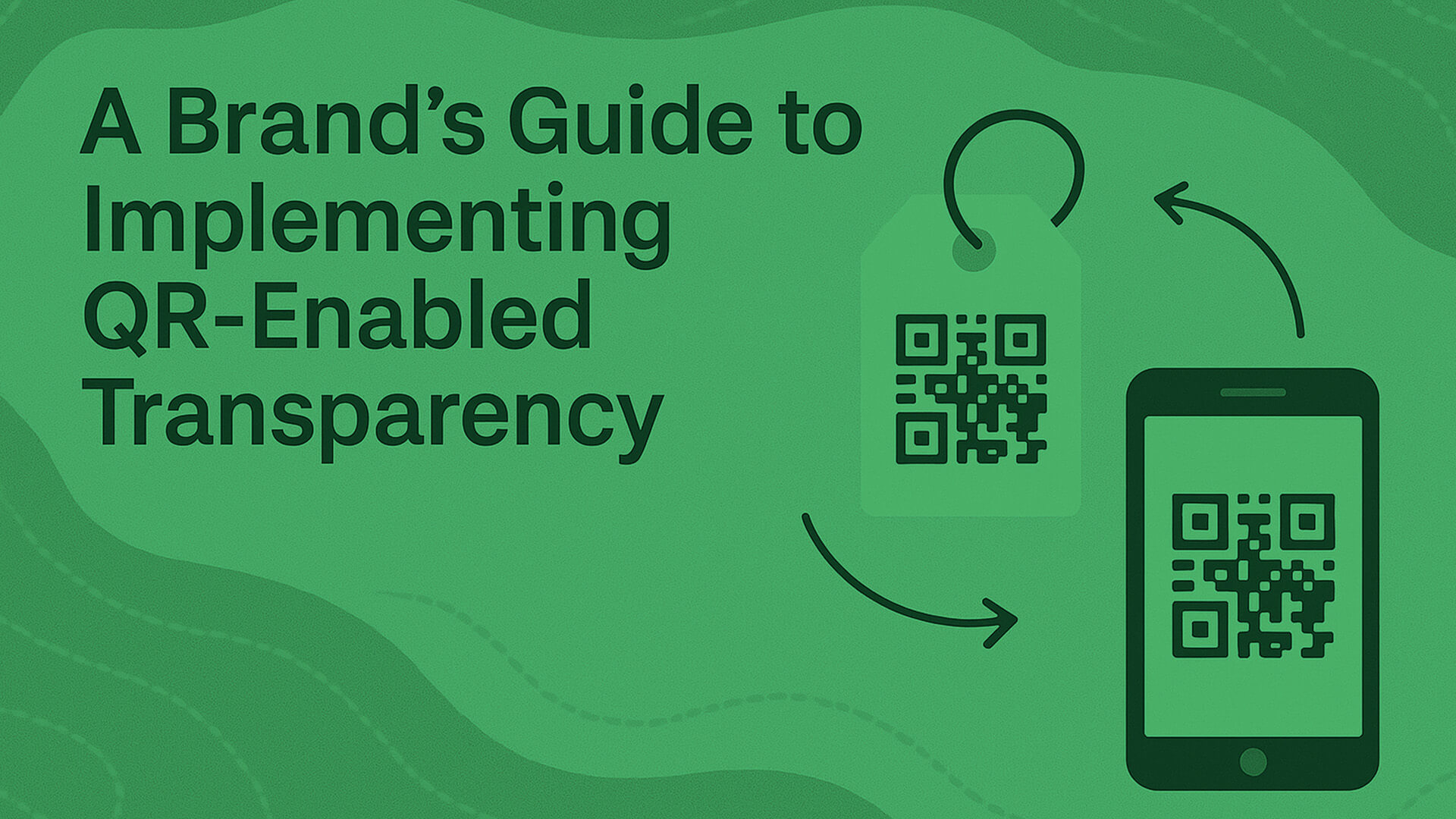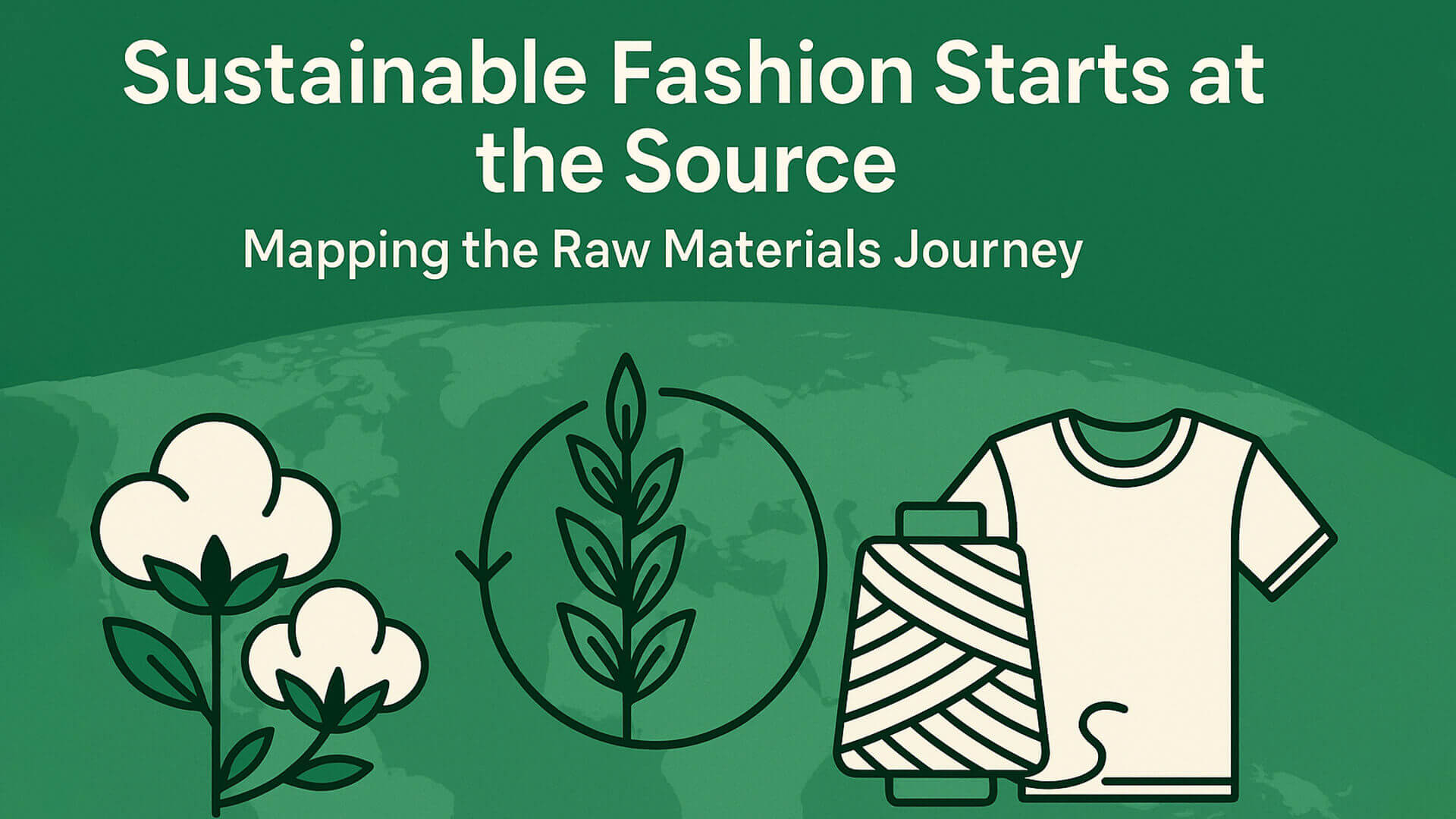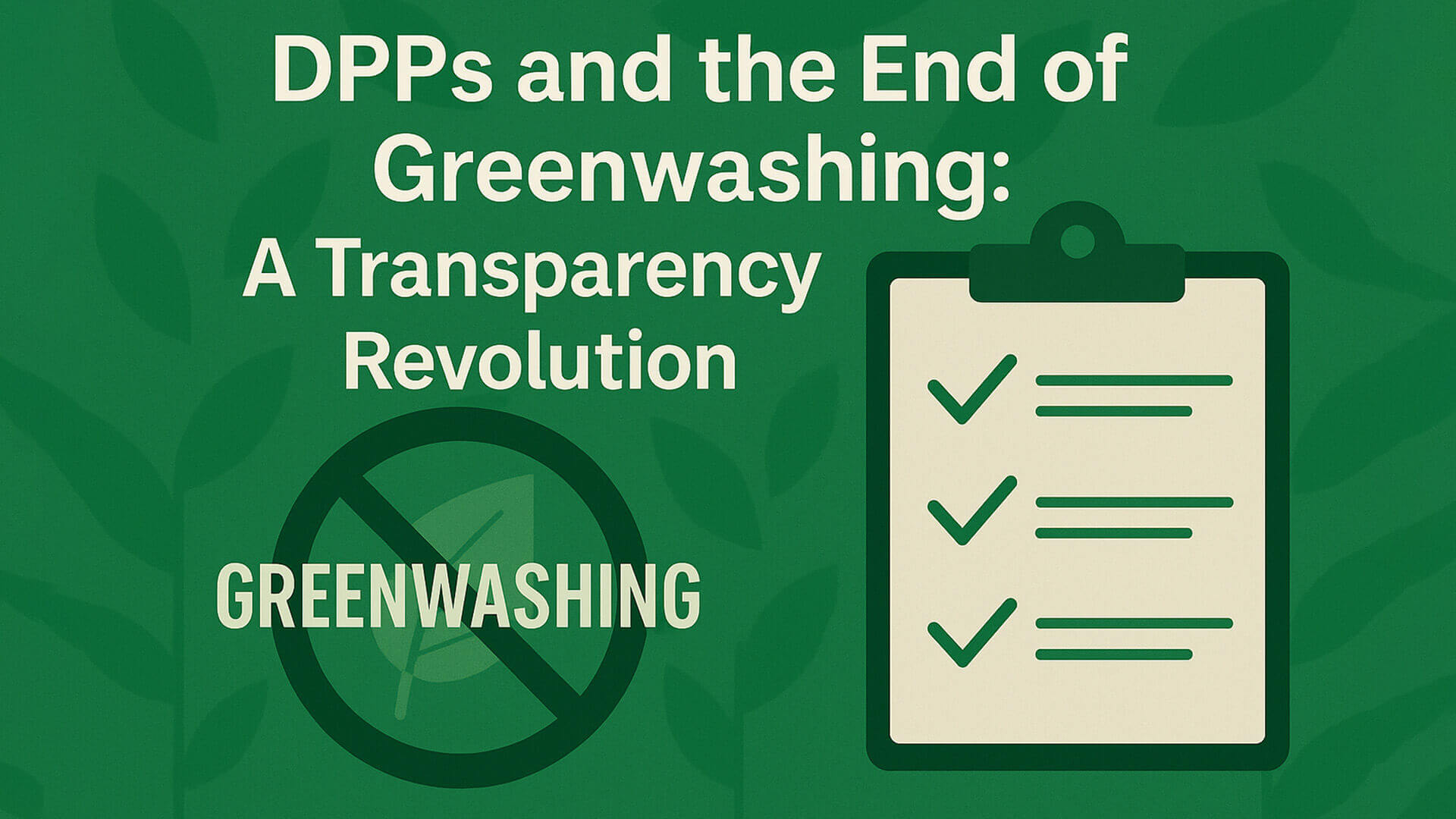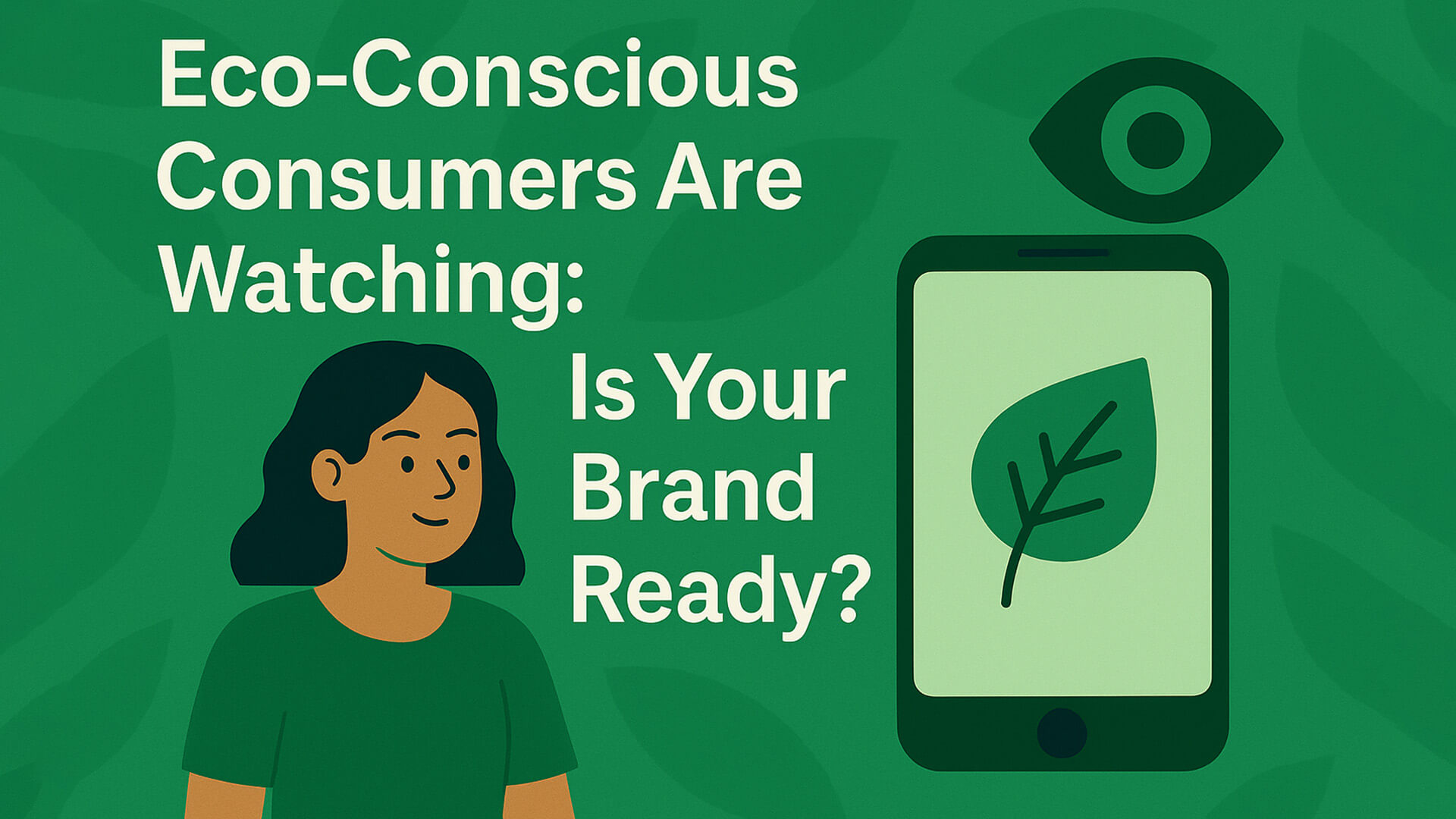- info@greenthreadsdpp.com
- Southampton, United Kingdom
A Brand’s Guide to Implementing QR-Enabled Transparency

Executive Summary
Transparency is now essential in fashion. QR codes, particularly dynamic ones, allow brands to share real-time, product-specific data with consumers. These scannable codes help brands show traceability, share care information, guide recycling and resale, and meet rising EU regulatory demands. They bridge the gap between physical products and digital ecosystems, offering a scalable and cost-effective solution for brands of all sizes.
With new legislation like the EU’s Ecodesign for Sustainable Products Regulation (ESPR) and consumer-led demands for greater accountability, fashion labels must move beyond traditional tags. QR-enabled labelling supports dynamic data that can be updated over time without the need for reprinting, making it adaptable to product changes and customer needs [1][2].
Additionally, QR codes provide brands with insights into customer interactions through scan analytics, allowing for improved marketing and product development strategies. They also foster brand loyalty by offering value-added digital experiences, such as styling advice or educational content on garment care and circularity [3].
This guide outlines how brands can implement QR-enabled garment labels to build trust, meet compliance, and support circular fashion goals through practical steps, industry case studies, and alignment with emerging global standards [4][5].
-
The Shift Toward Digital Transparency
Consumers are increasingly demanding transparency in how their clothes are made. Traditional hang tags and care labels fall short in answering questions about sourcing, labour practices, or environmental impact. QR codes provide a digital gateway for brands to meet these expectations by linking garments to interactive online content. These codes allow consumers to scan and explore details about fibre sources, production processes, and lifecycle impact [2]. Governments are reinforcing this shift. The European Union’s Ecodesign for Sustainable Products Regulation (ESPR) will soon require textile products to include a Digital Product Passport (DPP). QR codes are an accessible method of delivering this data [1]. For smaller fashion brands, QR codes are a low-cost yet effective entry into the world of traceable, transparent supply chains.
-
What Are QR Codes and How Do They Work?
QR codes, or Quick Response codes, are 2D barcodes that store information and make it instantly accessible via a mobile device. They act as a bridge between a physical garment and a digital experience, offering quick access to webpages, videos, databases, or dynamic content.
There are two main types:
Static QR Codes: Fixed information. Cannot be updated once printed.
Dynamic QR Codes: Link to editable content. Brands can update linked data without reprinting the QR code [4].
In fashion, QR codes are printed onto:
-
Garment care labels
-
Hang tags
-
Packaging materials
Once scanned, they can link to:
-
Product origin and supply chain data
-
Fibre composition and certifications
-
Care instructions and washing guides
-
Repair, resale, and recycling options [5]
Additional benefits include:
-
Increased customer interaction and education
-
Real-time updates on sustainability efforts
-
Analytics to monitor scan rates and user engagement [3]
This approach supports circular fashion by improving product traceability, extending garment lifespan, and reducing waste. By linking physical garments to digital content through QR codes, brands can provide ongoing access to care instructions, repair guidance, and recycling information. This helps consumers make more sustainable choices and encourages them to keep clothing in use for longer. It also allows recycling centres and resale platforms to identify materials and processes more accurately. As a result, fewer garments end up in landfills, and more resources are recovered or reused—contributing to a more responsible and transparent fashion system overall.
-
Benefits of QR-Enabled Transparency for Fashion Brands
QR-enabled transparency offers a wide range of advantages for fashion brands aiming to align with sustainability, boost consumer trust, and meet evolving regulations. By embedding dynamic QR codes into clothing labels or tags, brands can create a direct link between the physical product and a constantly updated digital profile. This approach enhances overall customer experience, improves product traceability, and supports circular economic initiatives.
Key benefits include:
Cost-Effective Updates
Dynamic QR codes allow brands to change or expand the linked content without reprinting tags. This reduces waste and keeps product data up to date if care guidelines or sustainability initiatives evolve [6].
Regulatory Compliance
QR codes help brands stay prepared for upcoming regulations, including the EU’s Digital Product Passport requirements, by offering a simple way to store and share product information digitally [1].
Consumer Trust and Engagement
Shoppers can scan QR codes to verify fibre sourcing, view ethical certifications, and learn about environmental impact. This transparency strengthens brand credibility and supports responsible purchasing decisions [2].
Support for Resale and Recycling
QR code profiles can include material composition and ownership history, making it easier for second-hand buyers or recyclers to handle products properly [7].
Data-Driven Insights
Brands can track QR scan behaviour, locations, and user interactions. This data helps improve future collections and personalise customer experiences [3].
QR codes have become more than just functional shortcuts. In the context of sustainable and circular fashion, they are powerful tools for transparency, education, and long-term customer engagement. By connecting physical garments to digital content, QR codes allow brands to tell the full story of a product like where it came from, how it was made, how to care for it, and what to do with it when it is no longer needed.
This level of access empowers consumers to make informed decisions, while also supporting global efforts to reduce waste and promote ethical sourcing. For brands, QR-enabled transparency offers a practical, low-cost way to comply with upcoming regulations like the EU’s Ecodesign for Sustainable Products Regulation and the Digital Product Passport framework. It also helps strengthen consumer trust, streamline resale processes, and provide valuable behavioural insights.
Whether used alone or in combination with technologies like NFC or RFID, QR codes represent a scalable solution for fashion brands of all sizes. From high street to heritage labels, they make it possible to bridge physical products with digital ecosystems in ways that are meaningful, measurable, and future proof. In short, QR codes are not just a smart tool, they are a strategic asset for building a more sustainable fashion industry.
-
QR Codes vs NFC Tags
Both QR codes and NFC (Near Field Communication) tags are widely used to connect physical products with digital content. However, their differences in cost, accessibility, and technical features make each better suited for different use cases in fashion.
QR codes are printed directly onto care labels, hang tags, or packaging. They are easy to generate, affordable, and can be scanned by nearly all modern smartphones using just the camera. This makes them especially attractive to small and medium-sized fashion brands. On the other hand, NFC tags contain microchips that store data and require specialised equipment to program and read. While more secure and harder to duplicate, they are also more expensive to produce and integrate [5].
Here’s a comparison of their key features:
Cost
-
QR Codes: Low production cost
-
NFC Tags: Higher cost due to chip integration
Accessibility
-
QR Codes: Scannable by any smartphone camera
-
NFC Tags: Require compatible smartphones and closer proximity
Security and Authentication
-
QR Codes: Open access with no encryption
-
NFC Tags: Can include encrypted data and better anti-counterfeit control [8]
Analytics and Flexibility
-
Both offer scan tracking, but dynamic QR codes are easier to manage and update without physical changes [6]
For most fashion brands aiming to implement circularity and transparency, QR codes are a cost-effective first step. They offer ease of use, broad accessibility, and minimal implementation barriers, making them ideal for introducing digital traceability without the need for complex infrastructure. With dynamic QR codes, brands can easily update product information in real time, such as care instructions, take-back programmes, or sustainability claims, long after the item has left the store. This level of adaptability supports long-term consumer engagement and aligns with evolving environmental regulations.
As brands grow or begin to handle premium or high-value collections, they may consider upgrading to more advanced technologies such as NFC or RFID. These tools offer secure access, encrypted data, and better protection against counterfeiting—features especially valuable for luxury items or closed-loop resale systems. NFC tags can also store data directly on the chip, enabling offline access where internet connectivity is limited.
The decision between QR and NFC depends on a brand’s goals, product range, and budget. However, starting with QR code provides a flexible foundation. It allows brands to build digital infrastructure gradually while actively contributing to a more transparent and circular fashion system. In short, QR codes pave the way for smarter, future-ready sustainability.
-
How to Implement QR-Enabled Transparency
Implementing QR-enabled transparency requires thoughtful planning, practical design, and clear communication. The goal is to ensure that every scan gives customers useful, trustworthy information that supports circular fashion choices. A well-designed QR system can improve consumer engagement, simplify compliance, and give brands useful data insights.
Steps to implement QR-enabled transparency:
Define the content to share
Decide what product information to include. This could cover:
-
Fibre composition and origin
-
Factory and supplier details
-
Environmental or ethical certifications
-
Washing and care instructions
-
Repair, resale, and recycling options [7]
Choose a dynamic QR code provider
Use a platform that allows you to:
-
Edit content after printing
-
Track scans and locations
-
Host secure, mobile-ready landing pages [4]
Design and print the QR code
Add the code to care labels, hang tags, or packaging. Ensure the printed material is:
-
Durable through wear and washing
-
Easily scannable without bending or distortion
Creating a user-friendly experience
The linked content should be:
-
Visually clear and concise
-
Regularly updated with fresh data or campaigns [3]
Promote the feature
Tell customers about the QR code and what they will find when they scan it. Use:
-
In-store displays
-
Social media posts
-
Product pages and email campaigns
Monitor engagement
Analyse scan data to see what interests your audience. Use this to:
-
Refine future product strategies
-
Improve educational content
-
Measure the impact of circular initiatives [6]
By following these steps, brands can turn QR codes into a simple yet powerful part of their sustainability journey. These little squares aren’t just tech gimmicks, they’re digital doorways that tell the full story behind each garment. From where it was made to how to wash it, repair it, or recycle it, QR codes put the power of information directly in the hands of the customer. They also help brands stay ahead of regulations, reduce waste, and build lasting trust.
-
Case Studies in Fashion QR Code Use
Several forward-thinking fashion brands have embraced QR code technology as a practical tool for promoting transparency, traceability, and sustainability. These case studies highlight how QR codes are being used not just for marketing, but as core components of circular fashion strategies.
Pangaia
Known for its science-based materials, Pangaia uses QR codes on its garments to give consumers detailed information about the carbon footprint of each item and the innovative materials used, such as seaweed fibre and bio-based dyes. This not only supports sustainability claims but also educates consumers about textile innovation [9].
Armedangels
German brand Armedangels integrates QR codes that link directly to supply chain data, including factory locations, ethical labour practices, and environmental standards. This creates transparency from farm to finished product and reinforces the brand’s social impact messaging [10].
Mud Jeans
A pioneer in circular denim, Mud Jeans include QR codes on every pair of jeans. These codes explain the leasing model, return and recycling options, and the breakdown of materials, making it easier for customers to understand and participate in circular systems [11].
Eileen Fisher
The US-based brand has piloted QR codes within its Renew programme. Scanning the code reveals a garment’s history and how it fits into the brand’s resale and repair loop, giving clothing a second life and reducing textile waste [12].
Sheep Inc
This knitwear brand links each garment to a QR code that shows the carbon impact, details of the exact sheep the wool came from, and real-time farm data. This brings full farm-to-wardrobe traceability to the customer in a uniquely engaging way [13].
Raeburn
Christopher Raeburn’s studio uses QR codes to show how pieces are made using upcycled materials. Customers scanning the label can see garment construction techniques and sustainability facts, turning the label into a storytelling platform [14].
These examples demonstrate that QR codes are no longer limited to brand storytelling. They are now a critical infrastructure for traceability, resale, repair, and recycling — all vital parts of circular fashion. For smaller brands looking to begin their sustainability journey, these case studies offer realistic, scalable models with measurable environmental and commercial outcomes.
-
Regulations and Industry Standards
The regulatory landscape for fashion is undergoing a major transformation. One of the most significant changes is the European Union’s upcoming Ecodesign for Sustainable Products Regulation (ESPR). By 2027, this legislation will require all fashion products sold within the EU to carry a Digital Product Passport (DPP), a digital record that includes information about a product’s composition, origin, environmental impact, and circularity potential [1].
QR codes are expected to be one of the primary tools for enabling access to these digital passports. Their affordability, ease of use, and compatibility with nearly all smartphones make them a practical choice for brands of all sizes. Unlike more expensive technologies such as RFID or NFC, QR codes offer a scalable solution that can be applied across high- and low-margin product lines [7].
To ensure consistency and global interoperability, organisations such as GS1, Textile Exchange, and the Global Digital Textile Standard (GDTS) are working on establishing unified frameworks for QR-based traceability. These initiatives aim to define what data should be shared, how it should be formatted, and how brands can maintain compliance across markets [11].
Even beyond Europe, momentum is growing. Retailers, regulators, and consumers worldwide are demanding increased product-level transparency. Countries including the United States, Canada, and Australia are exploring similar measures for digital labelling, especially for imported goods and sustainability claims.
By adopting QR codes in line with these emerging standards, brands can stay ahead of legislation, avoid costly retrofitting, and demonstrate leadership in ethical and sustainable fashion. In a global industry, future-proofing your product data strategy is not just smart, but rather it’s essential.
-
Conclusion
QR codes are no longer just marketing add-ons. They have become essential tools in the transition to a more transparent and sustainable fashion industry. In the context of circular fashion, QR codes serve as digital gateways that connect garments to meaningful information, offering consumers a deeper understanding of what they are wearing, where it came from, and how to care for or dispose of it responsibly [3].
For brands, QR codes are practical, low-cost, and scalable. They enable traceability, support product longevity, and open new ways to engage customers post-sale. From displaying fibre content and ethical certifications to enabling resale, repair, or recycling, QR codes allow garments to communicate throughout their lifecycle. This digital connection builds consumer trust, reinforces brand values, and supports compliance with growing regulations like the EU’s Digital Product Passport framework [1].
Whether implemented as a standalone solution or in tandem with NFC or RFID for higher-value items, QR codes offer flexibility without complexity. They empower small and large brands alike to take meaningful steps toward circularity. As fashion embraces transparency, QR codes are not just helpful, they are foundational to building a smarter, more connected, and more sustainable future [6].
-
References





